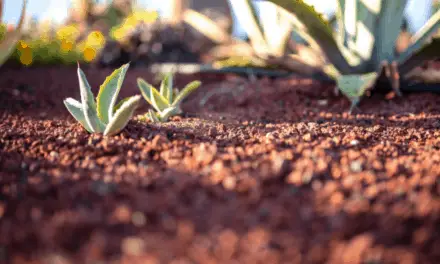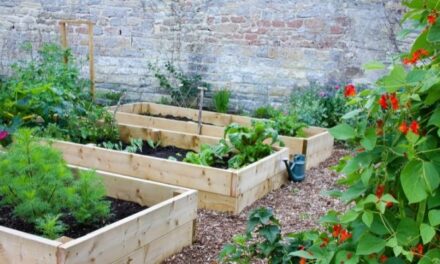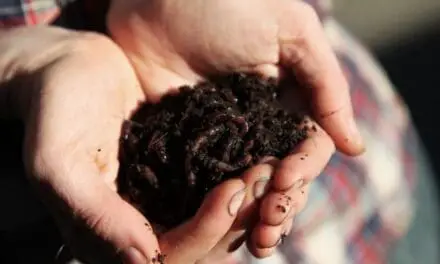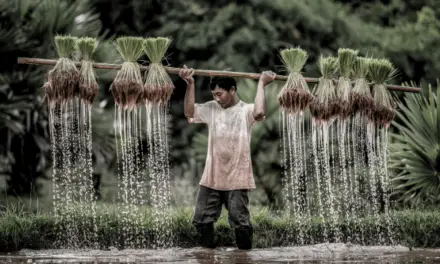Soil that is prone to waterlogging can be a real nightmare to do anything with.
It suffocates plants and is the messiest type of soil to attempt to work with.
Knowing how to identify and improve these soils can save you a lot of time, effort, and stress.
Table of Contents
Which Soil Gets Waterlogged Quickly?

Clay soil gets waterlogged the fastest because it has a smaller particle size than other types of soil. Molecules of water hold tighter to the fine particles of clay compared to more coarse sandy soil particles, which allows the clay to retain more water.
Essentially, clay soil is more tightly packed and has a larger surface area with less space between its soil particles so water has more surface to hold on to and less space to drain through the soil.
When it comes to your garden, there are three types of soil commonly used: clay, sand, and silt.
While all three types of soil have the potential to become waterlogged, clay is the most likely of the three to hold onto water.
Plants that require well-draining soil shouldn’t be planted in clay for this reason.
After heavy rainfall or if you have overwatered your plants, the soil can often become waterlogged.
This basically means that the soil is full of water.
Since almost every plant is at risk of root rot or drowning, it’s important to make sure they are planted in well-draining soil.
After all, good quality soil is the foundation for a healthy plant.
Why Does Clay Retain The Most Water?
Clay is the soil that becomes waterlogged the quickest, and for many reasons.
One of the main reasons why clay is more likely to become waterlogged is because of its extra-fine particle size.
Water is easily retained in smaller size particles and will pass through larger particles quicker because of their low nutritional content.
Clay has much smaller particles than silt or sand, which retain less water.
Organic matter usually is attracted to water, and clay has a higher level of organic matter than sandy soil.
This makes clay a much denser soil to work with, often swelling and shrinking as its moisture levels change.
All of this causes the clay to become less rich in nutrients, making sand or silt easier to work with.
Just imagine making a sandcastle out of dense compacted clay compared with making one from more brittle sandy soil.
The clay one will hold its form and stay together for a lot longer.
Also Read: Which Type of Soil Is Most Fertile?
How Do You Fix Waterlogged Soil?
One of the quickest and easiest ways to fix a waterlogged patch of soil is to create a drain.
Dig A Drainage Trench
This will help you get rid of any lingering water, and make sure the soil doesn’t become waterlogged in the future.
If you notice a particular area of soil that is frequently waterlogged, this could be a permanent solution so you no longer have to worry about it.
The best way to go about this is to figure out where the water is sitting and dig a trench that is approximately 4 or 5 inches deep and 6 to 12 inches wide.
It’s important to make sure you dig this in a way that the water can go downwards and away from the property.
While it’s not necessary, it does help if you add a plastic pipe.
When digging this trench, it’s important to add gravel to allow water to flow easily.
Once you’re done, cover up that trench with some soil to keep it hidden.
This is a relatively easy way to take care of that waterlogging problem once and for all.
How To Improve Soil That Is Waterlogged?
The easiest way to improve clay soil that’s prone to being waterlogged is by mixing organic matter through it over time.
Add Organic Material
It doesn’t matter which form of organic matter you choose, it could be leafmold or manure.
Get your hands on as much organic material as you can and turn it into the soil.
Chopped-up leaves, old manure, compost, and bags of perlite will all help to improve the drainage of clay soil.
At the end of every growing season, it’s important to add a hefty amount of organic matter to your garden beds.
Ideally, you’ll want to be ankle-deep in organic matter.
This is a very easy process. Once you empty the organic matter of choice onto your garden bed, spread it around, and leave it be.
You don’t have to do a thing because the worms will take care of the rest.
They will take care of all the digging and mixing for you.
It doesn’t get much more organic than that.
What Is The Difference Between Waterlogged Soil And Flooded Soil?
The difference is waterlogged soil has become saturated with water while flooded soil has temporarily overflowed with water.
Waterlogging
When soil becomes waterlogged, water isn’t able to drain out of the soil.
This removes air from the soil and the roots of plants can suffocate and drown.
Waterlogging usually occurs in poorly drained soils such as clay.
Flooding
Temporary flooding from heavy rain usually doesn’t do any long-term damage to plants, as long as it is short-lived.
Damage is done to plants and microbes when the soil remains soggy for extended periods and the air is cut off.
However, there will be an additional risk to plants if the floodwaters have been contaminated with any type of man-made pollutants like chemicals or sewage.
Final Thoughts
Every type of soil can become soggy, but soil that’s too clayey will usually cause more problems than sand or silt.
Clay soil can become waterlogged and rot the roots of your plants.
It can also make it difficult for your plant roots to take oxygen and water from the ground when clay soil becomes too compacted.
Luckily, for every gardening problem, there is a solution.
When you notice an area where your soil is extra waterlogged, try to build a trench so water will begin to flow away from your home.
There are easy ways to make sure this problem doesn’t ruin your patch.
At the end of the season, don’t forget to add organic matter to your garden bed.
This will slowly improve your soil over time and help ensure your garden bed is ready for the next season, and all those plants can have a healthy environment for their roots to thrive in.
You don’t need waterlogged soil damaging your plants.
When choosing soil for your garden, try to stick to silt or sand-based for better drainage and healthier plants.




